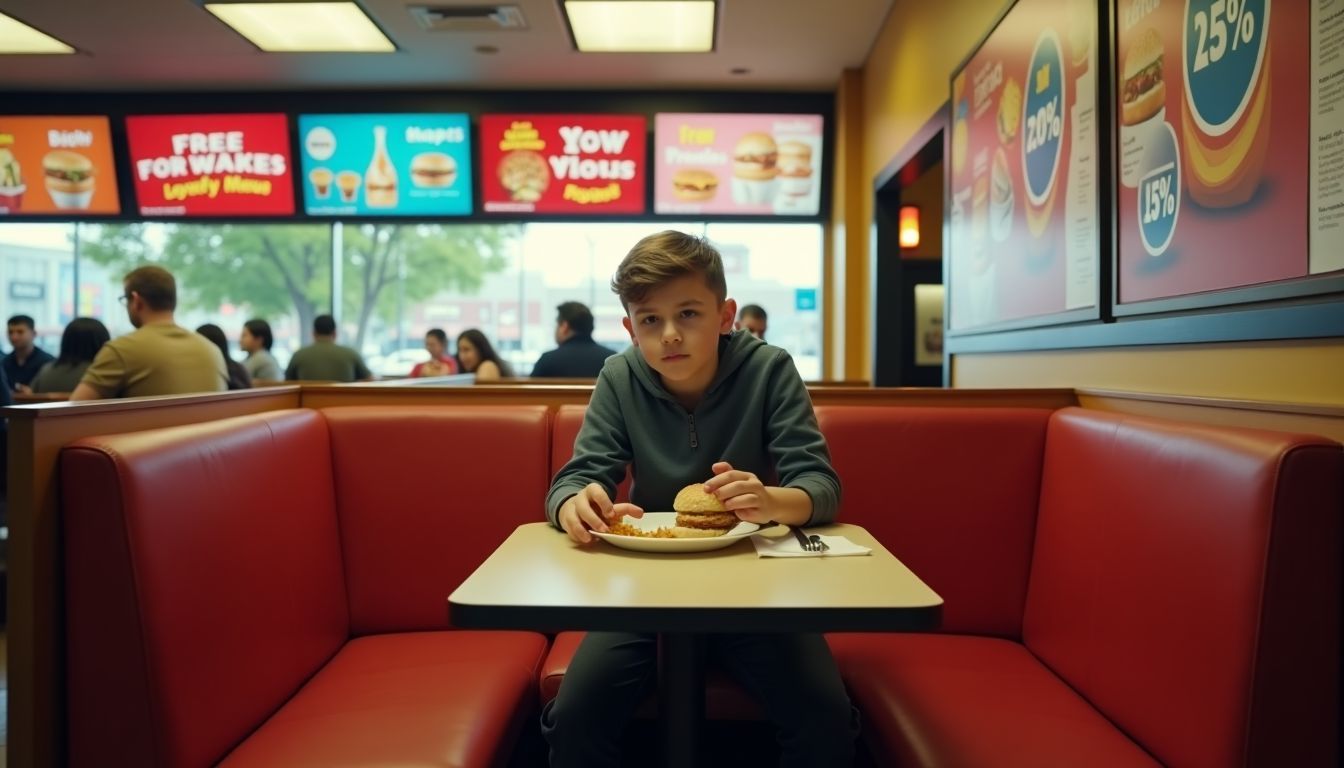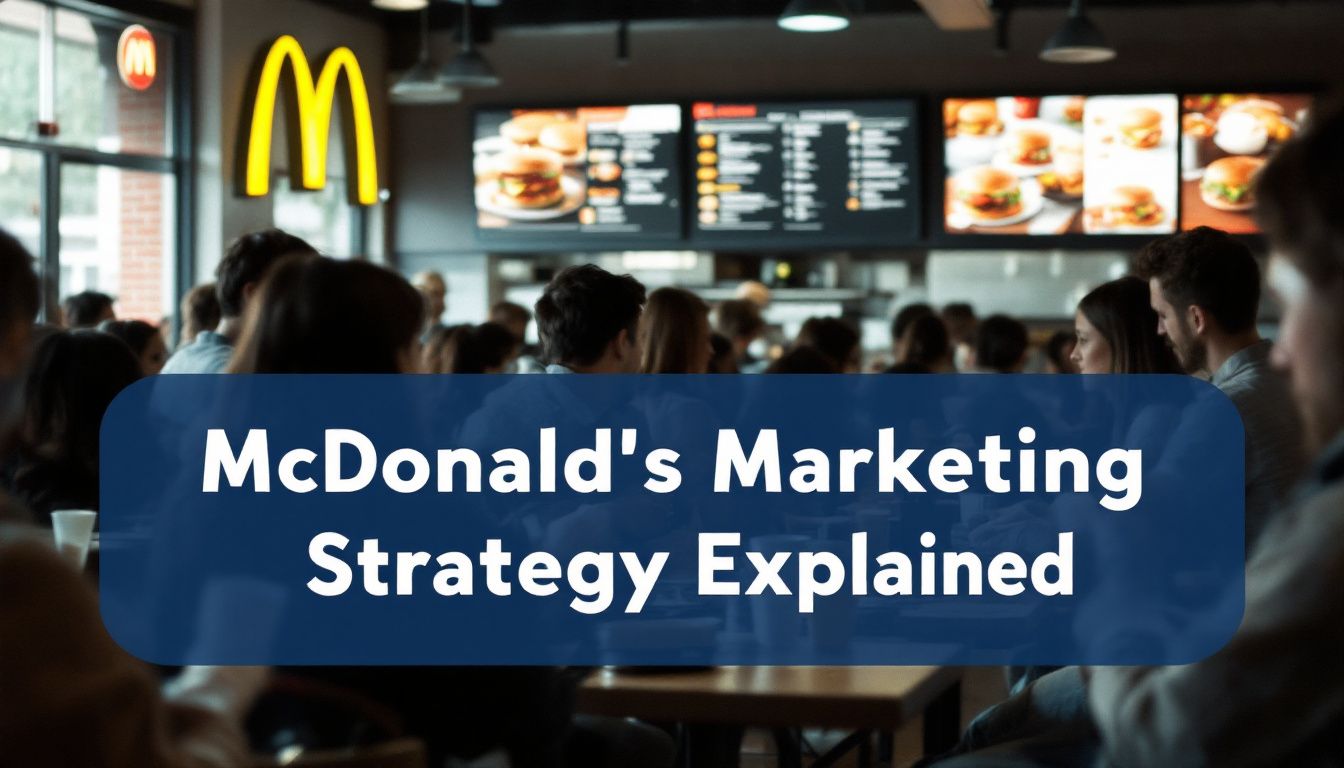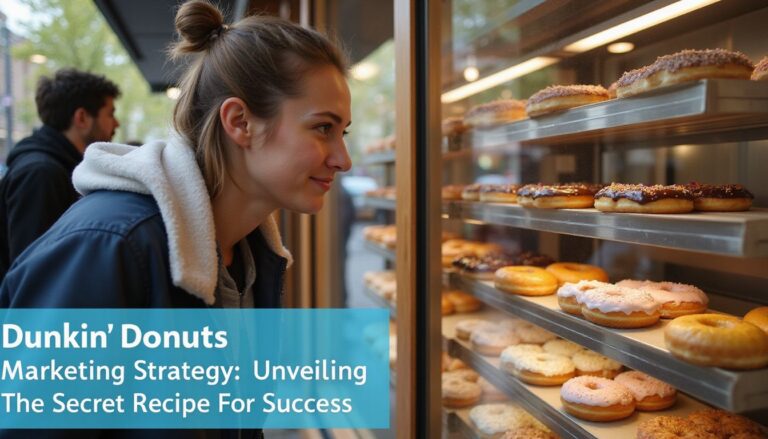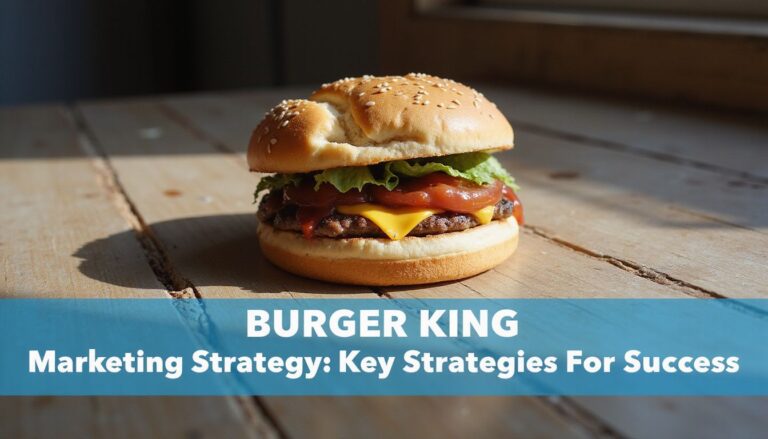Do you ever wonder why McDonald’s marketing works so well? I had the same question and spent hours exploring their branding methods, clever menu ideas, and ads aimed right at customers. Their ability to connect emotionally with consumers through nostalgia and familiarity is impressive. By examining their advertising strategies alongside a salesforce marketing tactics overview, one can see how they leverage data to create targeted campaigns that resonate with their audience. This meticulous approach not only enhances customer loyalty but also drives consistent sales growth.
These strategies help bring in over 69 million people every day worldwide. 2 In this post, I’ll share clear examples of how McDonald’s uses digital marketing, adapts menus to local tastes, and keeps customers coming back for more. 1 Read on to find out what truly makes those Golden Arches shine! 3
Key Takeaways
- McDonald’s app has hit over 68 million downloads—boosting customer loyalty through MyMcDonald’s Rewards, a points system for free food.
- Each day McDonald’s serves 69 million customers globally, offering localized menus like Japan’s Teriyaki burger or India’s McAloo Tikki.
- The brand mainly aims at four customer groups: families with kids, young adults, value-focused customers (who visit roughly 44 times each year), and health-minded eaters.
- In 2023, McDonald’s cut artificial flavors, colors, and preservatives from Happy Meals—with 61% now meeting their global nutrition standards.
- Digital orders made up more than 20% of worldwide sales in 2021; their campaign “Our Food, Your Questions” tackled over 72,000 customer inquiries.
McDonald’s Marketing Strategy: Goals and Objectives

McDonald’s has clear goals that drive all their marketing moves. They focus on building loyal fans while also trying to reach new people who might love their food.
Boost Brand Loyalty
I’ve noticed McDonald’s creates a loyal following through smart use of data and rewards. Their app has more than 68 million downloads—it’s become their key tool in keeping customers returning. 1 Users earn points through the MyMcDonald’s Rewards program with each buy, trading them in later for free food. This system helps people feel special—and valued.
A Harvard Business Review study showed smart customer data use can raise buyer satisfaction by about 6-10%. That catchy “I’m lovin’ it” slogan sticks easily in your head, connecting you to the brand.
Families remember Happy Meals too… especially when toys from favorite movies come with them. Those little extras can create great memories kids carry into adulthood. 1
Attract New Customers
I craft special promotions to attract new customers into McDonald’s daily. My team creates targeted deals for various groups—teens, seniors, and folks in between. Limited-time items, like the McRib sandwich, push customers to hurry in before they’re gone. 1 These short-term menu specials cause big jumps in store visits.
McDonald’s also adapts menus with local flavors, gaining fans around the globe. In Japan, customers are big fans of the Teriyaki burgers. 2 In India, people enjoy our McAloo Tikki sandwich, made especially for local tastes.
These clever menu tweaks help draw in customers who may usually skip fast food.
Working closely with local businesses in new regions provides useful clues about customer preferences. These partnerships help me understand exactly what potential diners are hungry for.
Expand Global Reach
McDonald’s operates thousands of restaurants across more than 100 countries. My research indicates their franchise system allows rapid growth without heavy spending. 4 They adapt menus to local tastes—like rice options in Asian markets or the McArabia sandwich offered in Middle Eastern locations.
This strategy attracts more customers, fitting local preferences well. 3 To enter new countries, McDonald’s often partners with local companies through joint ventures. Their powerful brand helps them reach places American fast food never went before.
These smart global moves have turned McDonald’s into one of the most famous brands worldwide.
Promote Healthier Options
Going global means matching different health needs in each market—even fast food spots get this. I’ve noticed McDonald’s stepping up to offer healthier foods that fit current tastes.
In 2023, the chain took a big step: it dropped artificial flavors, colors, and preservatives from Happy Meals. 5 That change made clear their focus on healthier kids’ food.
My own digging revealed that 61% of Happy Meal Bundles met McDonald’s Global Nutrition Criteria last year. In the U.K., as of January 2024, 68% of Happy Meal items were lower in fat, salt, or sugar.
Plus, McDonald’s now lists nutrition facts for Happy Meals on websites and apps in all major markets. Teaming up with the Alliance for a Healthier Generation helps support those improvements.
Also, every Happy Meal ad aimed at kids now promotes healthy drink and side choices.
Who is McDonald’s Target Audience?
McDonald’s targets four main groups – families with kids, young adults looking for quick meals, people who want good deals, and health-minded folks who enjoy their salads and wraps – let me show you how they reach each of these groups with smart ads and special offers.
Families with Children
Families with kids form a core part of my marketing strategy. My Happy Meals attract children ages 3-12—with small-sized portions and fun toys included. 6 Parents choose my restaurants because they’re fast, affordable, and the food appeals to their kids.
Value meals make it easy for adults to feed the whole family without spending too much. 7 I’ve also introduced healthier menu choices, to please parents who care about what their kids eat.
During holidays or school breaks, special deals help me draw more families inside. Plus, community programs—such as Ronald McDonald House Charities—build parent confidence in my brand.
Families remain central for success, but young adults represent another important group. I target them through separate promos and menu options.
Young Adults and Millennials
My focus is on millennials and young adults, using digital tools they know and love. This group wants fast, trendy meals that fit a packed schedule. My social media content, along with influencer partnerships, reaches them exactly where they hang out online.
The McDonald’s app gives budget-friendly offers, perfect for college students or young workers on tight budgets. 8
My menu also got a refresh—newer items that younger customers really want. I added healthier choices and simple nutrition facts to ease their worries about fast food. Limited-time items build excitement and create some FOMO—driving them to visit sooner rather than later.
With these strategies, many millennials moved from occasional visits to loyal customers who gladly share their McDonald’s experiences online.
Value Seekers
McDonald’s nails it with customers who love a good deal. Their popular “$1 $2 $3 Dollar Menu” fits right into tight budgets. And the numbers back this up—the average customer visits about 44 times a year. 9 Budget-friendly combo meals appeal strongly to these cost-aware diners. This loyal group is key to McDonald’s ongoing success. Customers return because they know they’ll get satisfying meals without overspending.
The company clearly understands price matters deeply to these consumers. Their ads focus strongly on value, speaking directly to shoppers seeking savings. 10 But price isn’t everything—McDonald’s also targets health-conscious customers looking for better meal options.
Health-Conscious Consumers
I’ve seen a big change in what people expect from fast food lately. Folks today care more about eating healthy… and surprisingly, McDonald’s gets it. The menu now has fresh salads, grilled chicken items, fruit and yogurt—and even the plant-based McPlant burger. 8 All these new options appeal to those watching calories, or following diets like vegan or low-carb.
Clear and easy nutrition details also matter to these health-focused customers. That’s exactly why McDonald’s now shares nutritional info openly in restaurants and online. Ads highlight fresh ingredients and balanced meal choices too. 8 Focusing more on health isn’t just good for customers—it’s smart business sense. More people care about nutrition these days, so McDonald’s remains popular by adding healthier items while keeping old favorites around.
Key Components of McDonald’s Marketing Mix
McDonald’s uses a smart mix of products, prices, places, and promotions to win in the fast-food world. Their marketing mix helps them stay ahead of competitors like Burger King and Wendy’s while meeting customer needs across different markets.
Product Innovation and Menu Diversification
I keep my menu fresh, adding new items to excite customers and boost brand appeal. The McPlant burger, created with Beyond Meat, attracts plant-based diners. 11 Local tastes shape menu items as well—like India’s popular McAloo Tikki or Japan’s favorite, the Ebi Filet-O.
Limited-time offerings, such as the seasonal McRib sandwich, bring loyal guests back more often. And people loved the all-day breakfast rollout, leading to bigger sales and stronger market share.
My menu variety offers affordable picks and healthy options, meeting different guest preferences.
Constant tests and market research help me update product choices regularly. I also prioritize the dining environment, investing $1 billion to upgrade European restaurants. 11 A test restaurant in Texas even experiments with automated service for faster meals.
Every new idea focuses on customer preferences, while keeping the most popular items at the menu’s center. Now, let’s check out how product choices connect with my pricing approach.
Competitive Pricing Strategies
McDonald’s doesn’t just whip up tasty new menu items—they nail smart pricing too. Take their bundle deals, like Happy Meals: those packs offer families real bang for their buck, helping bring in extra sales. 12 Their “$1 $2 $3 Dollar Menu” also makes their meals seem affordable to almost anyone. Little pricing tricks help customers feel they’re scoring a sweet deal.
They also tweak prices depending on each store’s location—what flies in busy New York City might flop in a quiet rural town. Sure, profit goals shape these choices, but McDonald’s stays careful to keep prices lower than other fast food spots. 13 This smart pricing helps them hold onto loyal customers and keeps people hungry for Big Macs and fries.
Strategic Placement and Accessibility
The way McDonald’s chooses locations is pretty smart. They set up right in busy downtown and shopping spots, where tons of people pass each day. 14 Many locations even stay open 24 hours—perfect for anyone grabbing late-night snacks.
Offering free Wi-Fi and play spaces draws in even more people. Families head there for the kid-friendly areas, and students or workers stop by for easy internet. Plus, using a franchise model lets them quickly open new spots without huge financial risks.
Every new restaurant sticks to the same smart location rules that worked before.
Promotional Campaigns and Advertising
McDonald’s ads are everywhere—TV, billboards, even popping up on social media feeds. Clever advertising keeps them fresh in people’s minds, including mine. Creative promos, like their famous Monopoly Game, keep customers eager to return for more pieces and prizes. 12
Big sponsorships help boost their brand, like supporting the FIFA World Cup and the Olympics—events shown globally to millions. McDonald’s also works with popular influencers and trendy brands, helping them connect with younger folks who might overlook typical ads.
They balance global campaigns with local styles—keeping a consistent message but tweaking it just enough for different places.
Leveraging Digital Marketing and Social Media
The golden arches are everywhere online—over 20% of their worldwide sales came from digital channels in 2021 alone. 1 On Facebook and Twitter, they chat with millions of fans every single day.
Their campaign “Our Food, Your Questions” openly answered more than 72,000 customer queries, building trust and honest conversation. They’ve even gotten creative with mobile games—like in 2020, with their AR-based “Drop the Beat” promotion, that had folks dancing while using their phones.
With smart online tools, they deliver personalized ads exactly at the right moment.
Data drives their advertising and special deals. For instance, their app remembers my past purchases and suggests menu items I’ll like. That personal detail makes me feel like they know me.
By blending app promotions, contests online, and regular social media, they keep fans involved and coming back for more. The fast-food leader succeeds by reaching customers right where they already are—online and on their phones.
Their mix of digital outreach and social content makes ordering easy—with convenient apps and plenty of delivery partners ready to help.
Localization and Cultural Adaptation in Global Markets
McDonald’s success goes way beyond social media—it’s all about fitting into local culture. I’ve noticed they operate over 100 countries, thousands of outlets, each with its own local feel.
Their “glocalization” method blends global standards and local tastes smoothly. For instance, Japan’s Ebi Burger or India’s McAloo Tikki—smart moves that show respect for local preferences. 15 And this approach isn’t only about what’s on their menu.
They create community ties by hiring locally and using local suppliers. Even their ads change from one country to another, matching what local folks care about. Prices shift, too, adjusted according to the local economy.
With careful cultural awareness, McDonald’s feels less like a foreign brand and more like a spot you know, right in your neighborhood. Local marketing teams also get some freedom to create ads and campaigns that resonate personally.
These thoughtful touches explain why McDonald’s stays popular in so many different cultures—they’re not simply selling burgers, they’re connecting with communities in genuine ways.
How Does McDonald’s Marketing Strategy Compare to KFC’s?
In the fast-food arena, understanding kfc’s unique marketing approach highlights its emphasis on regional flavors and local partnerships. While McDonald’s focuses on a global brand image with consistent menus, KFC crafts its strategies to resonate with diverse cultural tastes, ultimately creating a more personalized customer experience.
Conclusion
The golden arches stand tall—smart marketing done right, across the globe. I’ve noticed how McDonald’s mixes local flavors and global favorites to connect easily with people. They stay fresh by using digital tools young folks love, and their budget meals bring in shoppers watching their wallets.
TV ads, social media posts, special app deals—they pull it all together into a plan other brands envy. Happy Meals for kids, salads for adults—they know how to stay current and true to their roots at the same time.
References
- ^ https://www.brandvm.com/post/mcdonalds-marketing-strategy
- ^ https://businessmodelanalyst.com/mcdonalds-marketing-strategy/?srsltid=AfmBOorMkkhKbxtkrN91gwLAblFFpiM9yapTLF5DEl61thYpzZylSP9F (2024-12-19)
- ^ https://businessmodelanalyst.com/mcdonalds-marketing-strategy/?srsltid=AfmBOooQkqFMs_Eh5Os1c9GvpUHQsuZ9Xn1eH77Hyw79N01gEA_KMAC1 (2024-12-19)
- ^ https://businessmodelanalyst.com/mcdonalds-marketing-strategy/?srsltid=AfmBOoq3QTkmLC2xOj50GYUb9hPiXmKJ7tkzGlHCGVWhXEJPZuPcJ7Xl (2024-12-19)
- ^ https://corporate.mcdonalds.com/corpmcd/our-purpose-and-impact/food-quality-and-sourcing/nutrition-and-marketing-practices.html
- ^ https://businessmodelanalyst.com/mcdonalds-target-market/?srsltid=AfmBOopBaJ2M0MEv1yM0faqADP8ExWit9iH5BYEZGbsx2TNmEMC-lhwF (2024-12-22)
- ^ https://www.edrawmind.com/article/mcdonalds-segmentation-targeting-and-positioning.html
- ^ https://mcdo-menu-guide.com/target-audience/
- ^ https://www.start.io/blog/who-is-mcdonalds-target-market-mcdonalds-brand-analysis-audience-marketing-strategy-competitors/
- ^ https://businessmodelanalyst.com/mcdonalds-target-market/?srsltid=AfmBOopZhBGht9caz-J-UXgXxcaT4j3Cl3gBh5jKmf6yQGPx4G_tRuqY (2024-12-22)
- ^ https://iide.co/case-studies/mcdonalds-marketing-strategy/
- ^ https://panmore.com/mcdonalds-marketing-mix-4ps-analysis
- ^ https://businessmodelanalyst.com/mcdonalds-marketing-strategy/?srsltid=AfmBOoptdH3gmQ6MQB9eKtA0IEz0eZEXpjBdE_ftHdHq8wgOPP4icUdu
- ^ https://www.edrawmind.com/article/mcdonalds-marketing-mix-analysis.html
- ^ https://gtelocalize.com/mcdonalds-localization-strategy/







